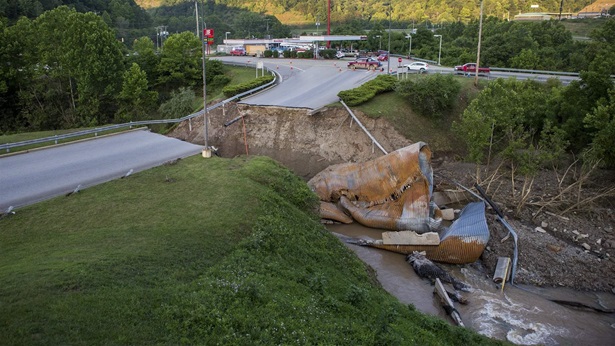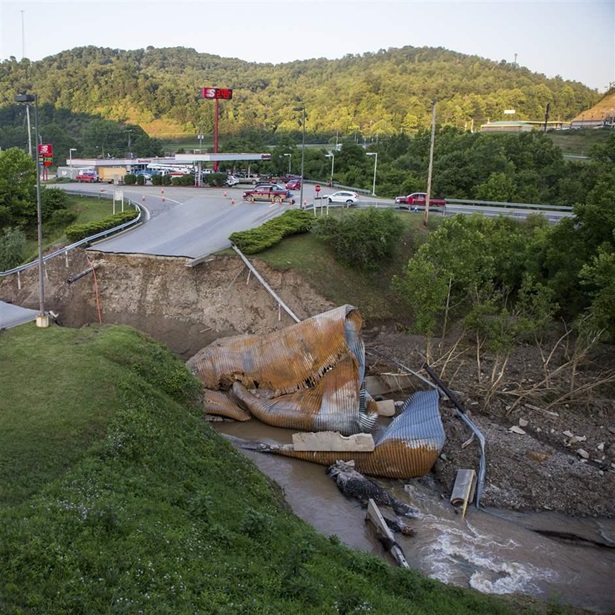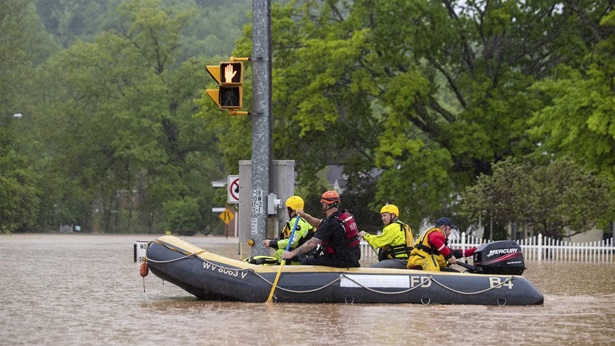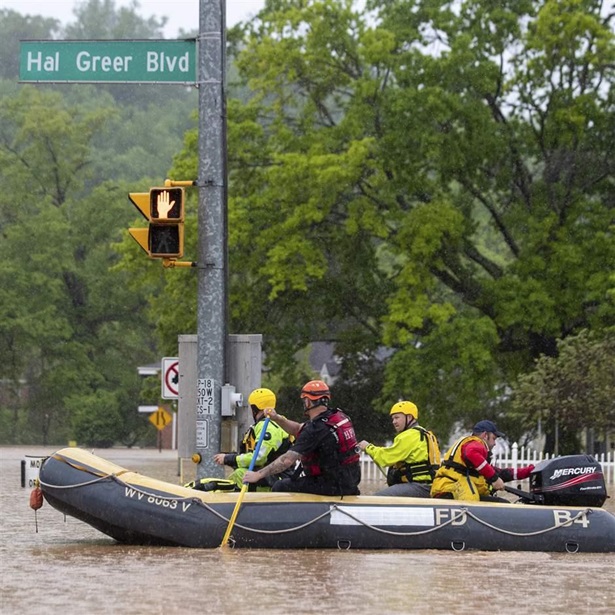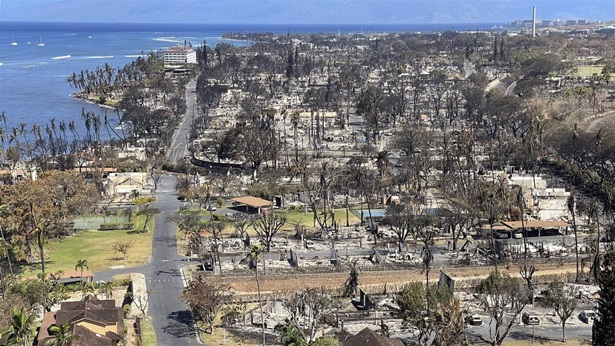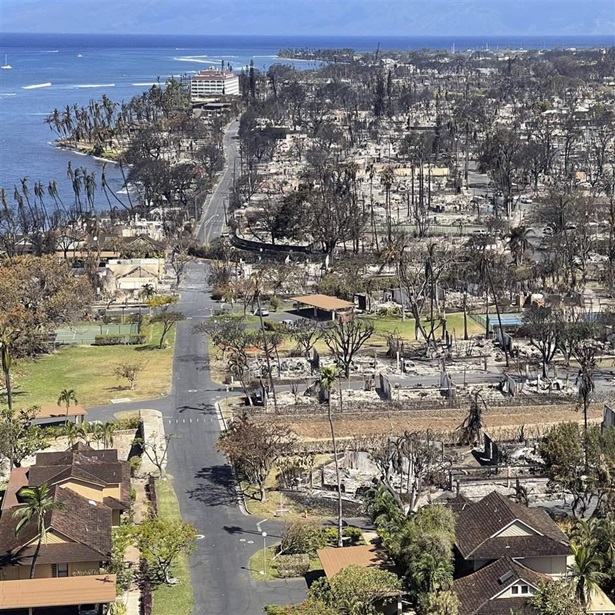Four Reasons Why West Virginia Lawmakers Should Invest in Flood Resilience
Funding would support critical infrastructure and reduce flood impacts statewide
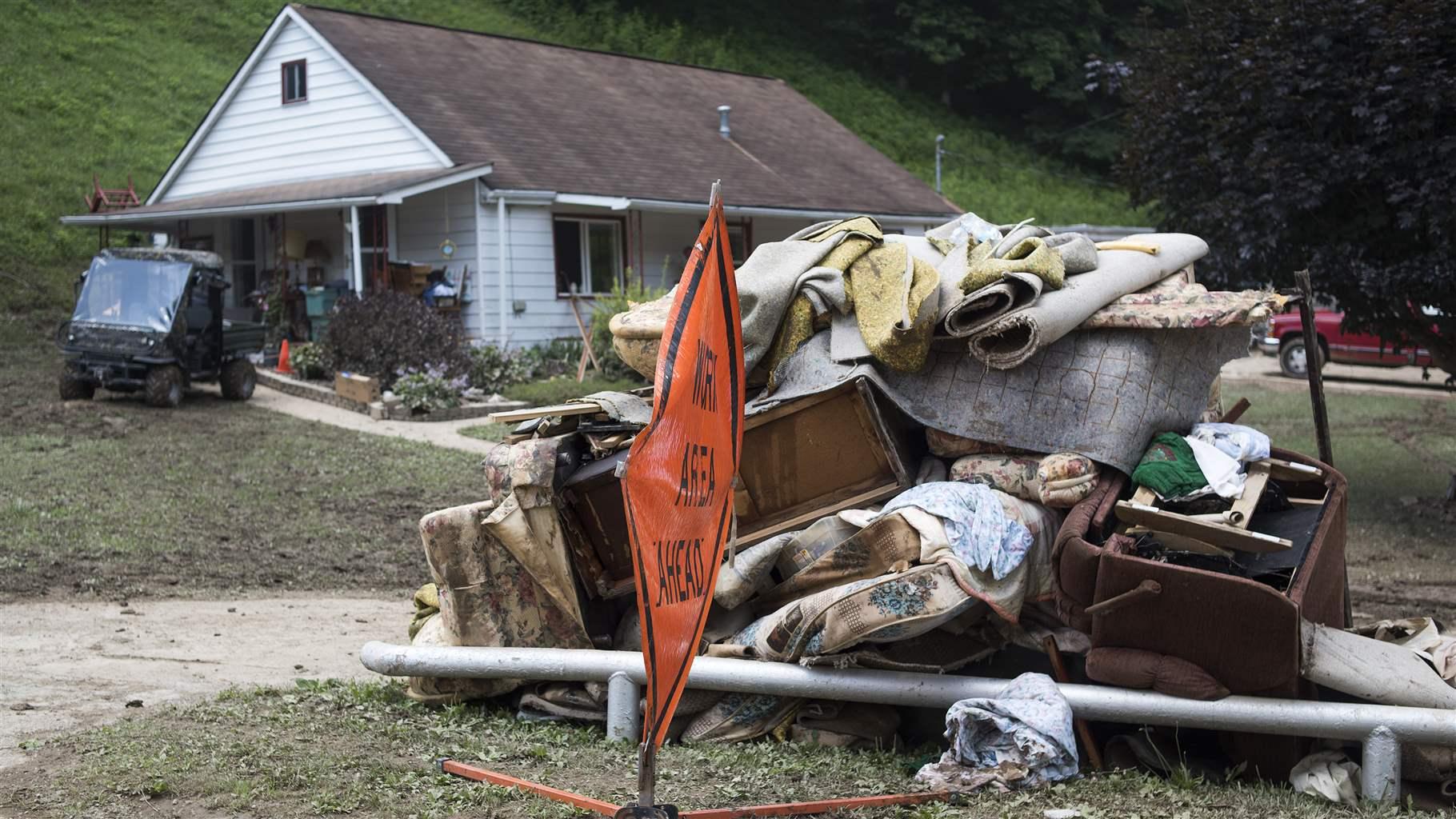
For West Virginians living along the state’s twisting waterways and within its deep valleys, flooding is an ever-present danger. The state experienced more than 1,600 floods from 2010 through 2021, ranging from highly localized flash floods to the catastrophic 2016 flood that affected nearly every corner of the state, claimed 23 lives, and caused more than $1 billion in damage.
But regardless of the size or type of flood, the effects on residents are often the same—destroyed homes, closed roads, impaired emergency services and a range of other major disruptions to daily life.
In the wake of this cycle of damage and destruction, the state government has taken important steps to stem the tide. In 2023, the West Virginia Legislature unanimously passed—and Governor Jim Justice signed into law—an initiative that requires, by June 2024, the development of the state’s first comprehensive flood resiliency plan and established a companion Flood Resiliency Trust Fund to support the new plan’s implementation.
Then, in his 2024 budget proposal, Gov. Justice proposed an initial investment of $50 million to the fund. As part of his January State of the State address, Justice reflected on the 2016 floods during an impassioned plea to lawmakers to support flood resilience efforts, saying, “There they were with the end loader at the end of the street, picking up all their memories and everything, and throwing them in the back of a dump truck. There’s always something you can do. And this will help a lot of folks.”
Here are four reasons why West Virginia lawmakers should support the governor’s call for investment in the Flood Resiliency Trust Fund.
1. Flood mitigation is more cost effective than flood recovery.
Floods are the nation’s most costly natural disaster. But through proactive investments in resilience and mitigation, costs could decrease over time. Research shows that every $1 invested in flood mitigation saves $6 in cleanup and other response and recovery costs. What’s more, state resilience funds can help local communities access federal mitigation and resilience grants by supporting upfront design and development of projects and by providing the 25% cost share often needed to access federal funds.
Designated and reliable resilience funds would allow the state to take a proactive—instead of reactive—approach to flooding.
2. Funding can help make critical infrastructure and transportation systems flood ready.
The 2016 floods left thousands of West Virginians without electricity for days and damaged or destroyed more than 1,500 roads and bridges as well as numerous critical facilities, including a fire department building in Rainelle and an elementary school in Clendenin. West Virginia could leverage proposed resilience funds to help make vital infrastructure—from vulnerable bridges and inadequate stormwater systems to water, energy, and transportation networks—flood ready.
3. Floods disproportionately impact families least equipped to recover.
The 2016 floods forced hundreds of families from their homes; some were still working through the recovery process up to five years later, with repair work still taking place in some houses and businesses and other damaged buildings sitting empty. Throughout the state, nearly 125,000 residents live in Special Flood Hazard Areas—places the Federal Emergency Management Agency has identified as being particularly flood prone, with a 1% chance of flooding each year. And in 71% of the state, social and economic factors—such as underemployment, low income, an aging population, and a lack of educational attainment—reduce people’s ability to prepare for, respond to, and recover from disasters. Resilience funding would help reduce risk in these communities through better flood mapping and, where appropriate, assistance in relocating residents from flood-prone areas.
4. West Virginia’s flooding issues are likely to get worse.
Last year the U.S. weathered a record 28 natural disasters of at least $1 billion in damage each, breaking the previous record of 22 such disasters in 2020. And a Pew analysis of National Oceanic and Atmospheric Administration data on billion-dollar weather disasters since 1980 found a significant increase in both the frequency and the cost of such disasters during the 20-year period from 2003 to 2022 compared with the previous 20-year period. From 1983 to 2002, there were 96 disasters in the U.S. that caused more than $546.3 billion in damage and other costs. These figures rose to 244 events and more than $1.95 trillion in costs in the period between 2003 and 2022—a 154% increase in the number of billion-dollar disasters and a 257% surge in costs. West Virginia is no exception to this trend; research from the First Street Foundation, a nonprofit nongovernmental disaster risk research organization, suggests that the state’s communities could experience as much as an 18% increase in flood risk by 2050.
Now, West Virginia lawmakers have a unique opportunity to support Gov. Justice’s resilience funding proposal and help the state meet the challenges of current and future flood risk. Investing in solutions now will spare communities and families significant costs—and heartache—for decades to come.
Mathew Sanders is a senior officer leading state resilience policy for Pew’s U.S. Conservation program.

